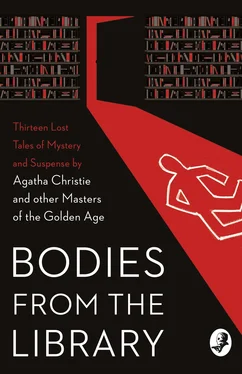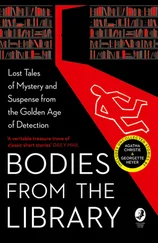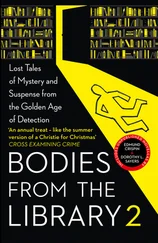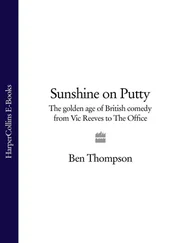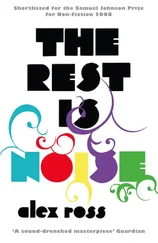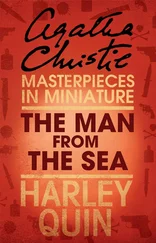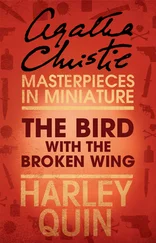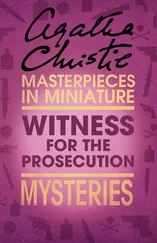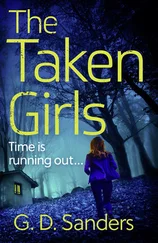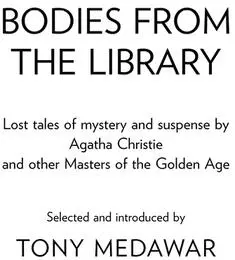

COLLINS CRIME CLUB
An imprint of HarperCollins Publishers
1 London Bridge Street
London SE1 9GF
www.harpercollins.co.uk
Published by Collins Crime Club 2018
Selection, introduction and notes © Tony Medawar 2018
For copyright acknowledgements, see Acknowledgements
Cover design by Holly Macdonald © HarperCollins Publishers Ltd 2018
Cover illustrations © Shutterstock.com
A catalogue copy of this book is available from the British Library.
All rights reserved under International and Pan-American Copyright Conventions. By payment of the required fees, you have been granted the non-exclusive, non-transferable right to access and read the text of this e-book on screen. No part of this text may be reproduced, transmitted, down-loaded, decompiled, reverse engineered, or stored in or introduced into any information storage and retrieval system, in any form or by any means, whether electronic or mechanical, now known or hereinafter invented, without the express written permission of HarperCollins.
Source ISBN: 9780008289225
Ebook Edition © July 2018 ISBN: 9780008289232
Version: 2018-07-04
Table of Contents
Cover
Title Page
Copyright
Introduction
Before Insulin
J. J. Connington
The Inverness Cape
Leo Bruce
Dark Waters
Freeman Wills Crofts
Linckes’ Great Case
Georgette Heyer
‘Calling James Braithwaite’
Nicholas Blake
The Elusive Bullet
John Rhode
The Euthanasia of Hilary’s Aunt
Cyril Hare
The Girdle of Dreams
Vincent Cornier
The Fool and the Perfect Murder
Arthur Upfield
Bread Upon the Waters
A. A. Milne
The Man With the Twisted Thumb
Anthony Berkeley
The Rum Punch
Christianna Brand
Blind Man’s Bluff
Ernest Bramah
Victoria Pumphrey
H. C. Bailey
The Starting-Handle Murder
Roy Vickers
The Wife of the Kenite
Agatha Christie
Acknowledgements
About the Publisher
‘Death in particular seems to provide the minds of the Anglo-Saxon race with a greater fund of innocent amusement than any other single subject.’
Dorothy L. Sayers
In the beginning was Poe. It all begins with him. An alcoholic American critic who created, among other things, the detective story. And for that, if for nothing else, God bless Edgar Allan Poe.
Poe’s detective was the Chevalier C. Auguste Dupin, a brilliant if patronising bibliophile of independent means who appeared in ‘The Murders in the Rue Morgue’, a long short story published in 1841, and in two other short stories. For these and other mysteries, Poe created the concept of a detective story—a story in which murder or some other crime is solved by observation and deduction—and Poe also created many of the tropes of detective fiction: the ‘impossible crime’, the notion of an amateur investigator from whom the professionals seek advice, the least likely suspect as murderer … Quite simply, before anyone did anything, Poe did everything. Or almost everything.
While Poe’s stories were popular, and prompted others to try their hand at detective fiction, it would be nearly twenty years before the first novel-length detective story was published. This was The Notting Hill Mystery (1862–63) by Charles Warren Adams, writing as Charles Felix. Though other detective novels appeared, most notably The Moonstone (1868) by Wilkie Collins, detection remained generally subordinate to romance and suspense, and it would be a further twenty years before the next landmark in detective fiction, Fergus Hume’s The Mystery of a Hansom Cab , published in 1886. And then, in 1887, readers were introduced to the greatest detective of them all, Arthur Conan Doyle’s Sherlock Holmes. As well as that first novel, A Study in Scarlet , Holmes appeared in three more novels, but it is principally because of the fifty-six short stories about Holmes, published in the Strand magazine, that the character has endured. While Holmes had other ‘rivals’ in the 1880s and ’90s, most notably Arthur Morrison’s investigator Martin Hewitt, none has survived to the present day.
The popularity of detective fiction, especially in the short story form, continued into the Edwardian Age, although only two characters from that period approach Holmes in terms of the quality of the stories in which they appear: G. K. Chesterton’s Father Brown, a Catholic priest with an eye for paradox and a soul for the guilty, who featured in more than fifty stories; and Dr John Thorndyke, R. Austin Freeman’s preternaturally intelligent forensic investigator, although his novel-length cases are more satisfying than the forty-one short stories in which he appears.
While the puzzles set by Chesterton and Freeman were for the most part very much in the tradition of the Sherlock Holmes mysteries, E. C. Bentley’s 1913 novel Trent’s Last Case was a game-changer, its publication often regarded as marking the beginning of what has become known as the Golden Age of crime and detective fiction. In Trent’s Last Case , Bentley presented a clear problem, the shooting of a millionaire; but he turned convention on its head by allowing Trent to fall in love with a suspect—commonplace now but far from so at that time—and Bentley further confounded readers’ expectations because Trent does not solve the case.
Trent’s Last Case was immensely popular and remains in print today, along with Bentley’s second Trent novel and a volume containing all thirteen of the Trent short stories, Trent Interviews (1938). The novel prompted a boom in detective fiction in Britain, and for the best part of the next twenty years a detective short story appeared in almost every issue of almost every magazine: in long-lost titles like The Red , Pearson’s , The Bystander , The Sphere , The Corner , Britannia and Eve , as well as others that have endured like Harper’s and The Tatler . Detective stories—and episodic mystery serials—also became a standard feature in national weekly newspapers like the News of the World , and they could also be found in regional weeklies like the Yorkshire Weekly Post and the Sheffield Weekly Telegraph . These and countless other titles quickly became a strong, diverse and seemingly sustainable market for detective fiction, especially stories that turned on a twist or which featured an impossible crime, an unusual weapon or an unbreakable alibi, and they provided a complementary source of income for many of the best-known Golden Age authors as well as for some opportunistic hacks.
Читать дальше
